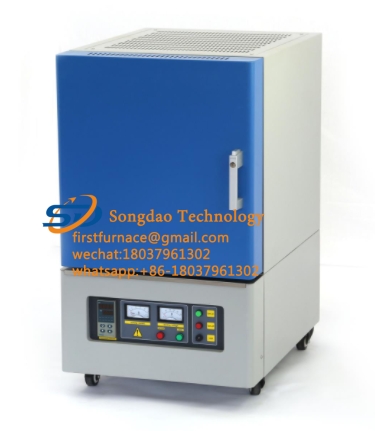- 25
- Sep
How to choose a reasonable combustion method for the muffle furnace
How to choose a reasonable combustion method for the muffle furnace

Combustion refers to a process in which combustible components (carbon, hydrogen, sulfur, and hydrocarbons) in fuel combine with oxygen in the air, and a violent chemical reaction occurs at a certain temperature to release light and heat. Complete combustion refers to the combustible components in the fuel. The air supply and the supply method are all suitable so that it will burn completely without emitting black smoke. Otherwise, it is incomplete combustion.
1. To make the muffle furnace reach the economic operation index, it is necessary to solve the problem of complete fuel combustion
2. High enough furnace temperature
Temperature is the primary condition for fuel combustion. The minimum temperature required for the fuel to start a violent oxidation reaction is called the ignition temperature. The heat required to heat the fuel above the ignition temperature is called the heat source. The heat source for the fuel to catch fire in the combustion chamber generally comes from the heat radiation of the flame and the furnace wall and the contact with the high-temperature flue gas. The furnace temperature formed by the heat source must be kept above the ignition temperature of the fuel, that is, the furnace temperature must be high enough for the fuel to burn continuously, otherwise the fuel will be difficult to ignite, fail to burn, or even fail.
3. The right amount of air
When the fuel is burned, it must be fully contacted and mixed with enough air in the air. When the furnace temperature is high enough, the combustion reaction speed is very fast, and the oxygen in the air will be quickly consumed. Sufficient air must be supplied. In actual operation, the air sent into the furnace is excessive, but the excess air cannot Too much, to be appropriate to avoid lowering the furnace temperature.
4. Sufficient combustion space
Combustible substances or fine coal dust volatilized from the fuel will burn as the flue gas flows. If the furnace space (volume) is too small, the flue gas flows too fast, and the flue gas stays in the furnace for too short time. Combustible materials and coal dust are fully burned. Especially when combustibles (combustible gas, oil droplets) hit the heating surface of the boiler before they are completely burned, the combustibles are cooled to below the ignition temperature and cannot burn completely, forming carbon nodules. At the same time, ensuring sufficient combustion space is conducive to the full contact and mixing of air and combustibles, so that combustibles can be fully burned.
5. Sufficient time
It takes a certain amount of time for the fuel to burn out if it is not on fire, especially for layer burners. It takes enough time for the fuel to burn. The larger the burning particles, the longer the burning time. If the burning time is not enough, the fuel burns incompletely.
